Triphenylphosphine hydrobromide (1:1)
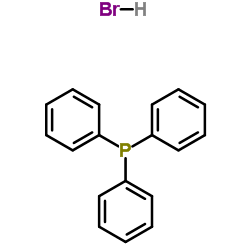
Triphenylphosphine hydrobromide (1:1) structure
|
Common Name | Triphenylphosphine hydrobromide (1:1) | ||
|---|---|---|---|---|
| CAS Number | 6399-81-1 | Molecular Weight | 343.197 | |
| Density | N/A | Boiling Point | 360ºC at 760 mmHg | |
| Molecular Formula | C18H16BrP | Melting Point | 196 °C (dec.)(lit.) | |
| MSDS | Chinese USA | Flash Point | 181.7ºC | |
| Symbol |


GHS05, GHS07 |
Signal Word | Danger | |
| Name | Triphenylphosphine hydrobromide |
|---|---|
| Synonym | More Synonyms |
| Boiling Point | 360ºC at 760 mmHg |
|---|---|
| Melting Point | 196 °C (dec.)(lit.) |
| Molecular Formula | C18H16BrP |
| Molecular Weight | 343.197 |
| Flash Point | 181.7ºC |
| Exact Mass | 342.017303 |
| PSA | 13.59000 |
| LogP | 4.40290 |
| Storage condition | -20°C |
Synonym:None Known Section 2 - COMPOSITION, INFORMATION ON INGREDIENTS
Risk Phrases: 36/37/38 Section 3 - HAZARDS IDENTIFICATION EMERGENCY OVERVIEW
Irritating to eyes, respiratory system and skin.Corrosive. Potential Health Effects Eye: Causes eye burns. May cause chemical conjunctivitis and corneal damage. Skin: Causes skin burns. May cause skin rash (in milder cases), and cold and clammy skin with cyanosis or pale color. Ingestion: May cause severe and permanent damage to the digestive tract. Causes gastrointestinal tract burns. May cause perforation of the digestive tract. May cause cardiac disturbances. May cause central nervous system depression. May cause systemic effects. Inhalation: Causes chemical burns to the respiratory tract. Aspiration may lead to pulmonary edema. May cause cardiac abnormalities. May cause systemic effects. Inhalation at high concentrations may cause CNS depression and asphixiation. Chronic: Effects may be delayed. Section 4 - FIRST AID MEASURES Eyes: Get medical aid immediately. Do NOT allow victim to rub eyes or keep eyes closed. Extensive irrigation with water is required (at least 30 minutes). Skin: Get medical aid immediately. Immediately flush skin with plenty of water for at least 15 minutes while removing contaminated clothing and shoes. Wash clothing before reuse. Destroy contaminated shoes. Ingestion: Never give anything by mouth to an unconscious person. Get medical aid immediately. Do NOT induce vomiting. If conscious and alert, rinse mouth and drink 2-4 cupfuls of milk or water. Inhalation: Get medical aid immediately. Remove from exposure and move to fresh air immediately. If breathing is difficult, give oxygen. Do NOT use mouth-to-mouth resuscitation. If breathing has ceased apply artificial respiration using oxygen and a suitable mechanical device such as a bag and a mask. Notes to Physician: Section 5 - FIRE FIGHTING MEASURES General Information: As in any fire, wear a self-contained breathing apparatus in pressure-demand, MSHA/NIOSH (approved or equivalent), and full protective gear. During a fire, irritating and highly toxic gases may be generated by thermal decomposition or combustion. Contact with metals may evolve flammable hydrogen gas. Containers may explode when heated. Non-combustible, substance itself does not burn but may decompose upon heating to produce irritating, corrosive and/or toxic fumes. Runoff from fire control or dilution water may cause pollution. Extinguishing Media: Use water spray to cool fire-exposed containers. Substance is noncombustible; use agent most appropriate to extinguish surrounding fire. Do NOT get water inside containers. Section 6 - ACCIDENTAL RELEASE MEASURES General Information: Use proper personal protective equipment as indicated in Section 8. Spills/Leaks: Vacuum or sweep up material and place into a suitable disposal container. Clean up spills immediately, observing precautions in the Protective Equipment section. Avoid generating dusty conditions. Provide ventilation. Section 7 - HANDLING and STORAGE Handling: Use only in a well-ventilated area. Minimize dust generation and accumulation. Do not breathe dust, vapor, mist, or gas. Do not get in eyes, on skin, or on clothing. Keep container tightly closed. Do not ingest or inhale. Discard contaminated shoes. Storage: Keep container closed when not in use. Store in a cool, dry area away from incompatible substances. Section 8 - EXPOSURE CONTROLS, PERSONAL PROTECTION Engineering Controls: Facilities storing or utilizing this material should be equipped with an eyewash facility and a safety shower. Use adequate ventilation to keep airborne concentrations low. Exposure Limits CAS# 6399-81-1: Personal Protective Equipment Eyes: Wear appropriate protective eyeglasses or chemical safety goggles as described by OSHA's eye and face protection regulations in 29 CFR 1910.133 or European Standard EN166. Skin: Wear appropriate protective gloves and clothing to prevent skin exposure. Clothing: Wear appropriate protective clothing to prevent skin exposure. Respirators: Follow the OSHA respirator regulations found in 29 CFR 1910.134 or European Standard EN 149. Use a NIOSH/MSHA or European Standard EN 149 approved respirator if exposure limits are exceeded or if irritation or other symptoms are experienced. Section 9 - PHYSICAL AND CHEMICAL PROPERTIES Physical State: Powder Color: white Odor: None reported. pH: Not available. Vapor Pressure: Not available. Viscosity: Not available. Boiling Point: Not available. Freezing/Melting Point: 196.00 - 199.00 deg C Autoignition Temperature: Not applicable. Flash Point: Not applicable. Explosion Limits, lower: Not available. Explosion Limits, upper: Not available. Decomposition Temperature: Solubility in water: Specific Gravity/Density: Molecular Formula: C18H16BrP Molecular Weight: 343.20 Section 10 - STABILITY AND REACTIVITY Chemical Stability: Stable under normal temperatures and pressures. Conditions to Avoid: Incompatible materials, dust generation, excess heat, strong oxidants. Incompatibilities with Other Materials: Oxidizing agents. Hazardous Decomposition Products: Carbon monoxide, oxides of phosphorus, irritating and toxic fumes and gases, carbon dioxide. Hazardous Polymerization: Has not been reported. Section 11 - TOXICOLOGICAL INFORMATION RTECS#: CAS# 6399-81-1 unlisted. LD50/LC50: Not available. Carcinogenicity: Triphenylphosphonium Bromide - Not listed by ACGIH, IARC, or NTP. Section 12 - ECOLOGICAL INFORMATION Section 13 - DISPOSAL CONSIDERATIONS Dispose of in a manner consistent with federal, state, and local regulations. Section 14 - TRANSPORT INFORMATION IATA Shipping Name: CORROSIVE SOLID, N.O.S.* Hazard Class: 8 UN Number: 1759 Packing Group: II IMO Shipping Name: CORROSIVE SOLID, N.O.S. Hazard Class: 8 UN Number: 1759 Packing Group: II RID/ADR Shipping Name: CORROSIVE SOLID, N.O.S. Hazard Class: 8 UN Number: 1759 Packing group: II Section 15 - REGULATORY INFORMATION European/International Regulations European Labeling in Accordance with EC Directives Hazard Symbols: XI Risk Phrases: R 36/37/38 Irritating to eyes, respiratory system and skin. Safety Phrases: S 24/25 Avoid contact with skin and eyes. WGK (Water Danger/Protection) CAS# 6399-81-1: No information available. Canada None of the chemicals in this product are listed on the DSL/NDSL list. CAS# 6399-81-1 is not listed on Canada's Ingredient Disclosure List. US FEDERAL TSCA CAS# 6399-81-1 is not listed on the TSCA inventory. It is for research and development use only. SECTION 16 - ADDITIONAL INFORMATION N/A |
| Symbol |


GHS05, GHS07 |
|---|---|
| Signal Word | Danger |
| Hazard Statements | H302-H314 |
| Precautionary Statements | P280-P305 + P351 + P338-P310 |
| Personal Protective Equipment | Eyeshields;Faceshields;full-face particle respirator type N100 (US);Gloves;respirator cartridge type N100 (US);type P1 (EN143) respirator filter;type P3 (EN 143) respirator cartridges |
| Hazard Codes | C:Corrosive; |
| Risk Phrases | R34 |
| Safety Phrases | S26-S36/37/39-S45 |
| RIDADR | UN 3261 8/PG 3 |
| WGK Germany | 3 |
| Packaging Group | III |
| Hazard Class | 6.1 |
| HS Code | 29310095 |
|
~96% 
Triphenylphosph... CAS#:6399-81-1 |
| Literature: Aoyagi, Naoto; Furusho, Yoshio; Endo, Takeshi Tetrahedron Letters, 2013 , vol. 54, # 51 p. 7031 - 7034 |
|
~% 
Triphenylphosph... CAS#:6399-81-1 |
| Literature: Synthesis, , vol. 1, # 5 p. 479 - 482 |
|
~% 
Triphenylphosph... CAS#:6399-81-1 |
| Literature: Bulletin of the Chemical Society of Japan, , vol. 80, # 9 p. 1785 - 1790 |
|
~% 
Triphenylphosph... CAS#:6399-81-1 |
| Literature: Bulletin of the Chemical Society of Japan, , vol. 80, # 9 p. 1785 - 1790 |
| Precursor 4 | |
|---|---|
| DownStream 9 | |
| HS Code | 2902909090 |
|---|---|
| Summary | 2902909090 other aromatic hydrocarbons。Supervision conditions:None。VAT:17.0%。Tax rebate rate:9.0%。MFN tariff:2.0%。General tariff:30.0% |
|
Microwave-assisted synthesis of cyclopentanones using the relevant phosphorus ylides.
Comb. Chem. High Throughput Screen 15(4) , 354-7, (2012) A one-pot synthesis of cyclopentanone derivatives from phosphorus ylide under lab-type microwave assisted methodology was described. The phosphorus ylides were obtained via the reaction of activated a... |
|
|
Solubilization of triphenylamine, triphenylphosphine, triphenylphosphineoxide and triphenylmethanol in single and binary surfactant systems.
J. Colloid. Interface Sci. 364(1) , 163-9, (2011) Solubilization and co-solubilization of triphenyls (TPs) viz., triphenylphosphine (TPP), triphenylphosphineoxide (TPPO), triphenylamine (TPA) and triphenylmethanol (TPM) were studied in various single... |
|
|
Mixed ligand-silver(I) complexes with anti-inflammatory agents which can bind to lipoxygenase and calf-thymus DNA, modulating their function and inducing apoptosis.
Metallomics 4(6) , 545-60, (2012) A new mixed ligand-silver(I) complex of formula [Ag(tpp)(2)(p-Hbza)] (1) (p-HbzaH = 4-hydroxybenzoic acid and tpp = triphenylphosphine) has been synthesized and characterized by elemental analysis, mp... |
| MFCD00035107 |
| phosphine, triphenyl-, hydrobromide |
| EINECS 229-012-6 |
| triphenylphosphane,hydrobromide |
| Triphenylphosphine hydrobromide (1:1) |
| Phosphine, triphenyl-, hydrobromide (1:1) |
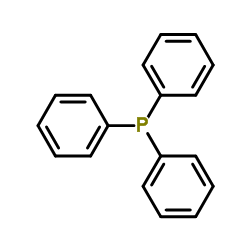


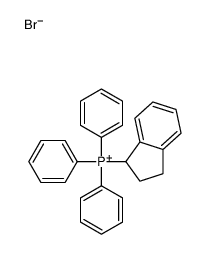

 CAS#:1104-78-5
CAS#:1104-78-5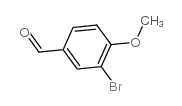 CAS#:34841-06-0
CAS#:34841-06-0 CAS#:7237-34-5
CAS#:7237-34-5 CAS#:4397-53-9
CAS#:4397-53-9 CAS#:1779-49-3
CAS#:1779-49-3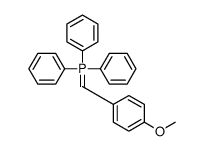 CAS#:21960-26-9
CAS#:21960-26-9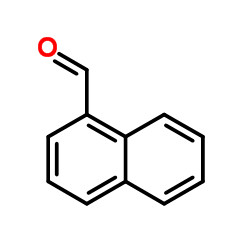 CAS#:66-77-3
CAS#:66-77-3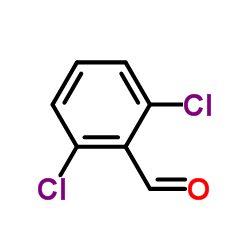 CAS#:83-38-5
CAS#:83-38-5
